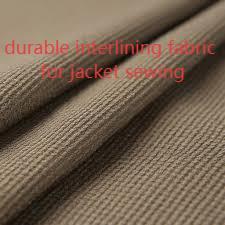In garment manufacturing, Interlining plays a pivotal role in providing structure, durability, and improved comfort to finished products. Selecting the right interlining material can greatly impact the overall quality and appearance of clothing. Modern textile producers focus on innovative materials and techniques that optimize these supportive layers for better performance and aesthetic appeal.
Structural Benefits and Garment Stability
A supportive fabric layer helps maintain the shape and form of apparel, preventing deformation during wear. It adds necessary rigidity to collars, cuffs, and waistbands, enhancing the garment’s silhouette. This layer also improves wrinkle resistance, keeping clothing looking fresh and polished throughout the day.
Varieties of Supportive Fabrics and Their Applications
Different types of these fabric layers serve various purposes. Fusible variants bond easily with outer fabrics under heat, making them popular for streamlined manufacturing processes. Sew-in options provide a softer feel and flexibility, ideal for delicate or high-end garments. Specialty variants offer added insulation, stretch, or water repellency, broadening their application scope.
Innovations in Material Composition
Textile developers are incorporating new fibers and composites that enhance the functionality of these layers. Lightweight, breathable materials help improve wearer comfort without sacrificing support. Advances in bonding technology have increased the durability and washability of garments, extending product life cycles and customer satisfaction.
Environmental Impact and Sustainable Practices
Sustainable production has become a priority in the textile industry. Using recycled fibers and eco-friendly adhesives reduces environmental footprint. Manufacturers are adopting greener processes that conserve water and energy during production, responding to consumer demand for responsible fashion.
Choosing the Optimal Support Layer for Production Needs
Selecting the correct fabric involves considering garment type, fabric compatibility, and desired performance characteristics. Factors such as weight, stiffness, and adhesive type influence the final choice. Collaborating with knowledgeable suppliers ensures technical support and tailored solutions for diverse garment lines.
These advancements contribute to the growing importance of choosing the right supportive fabric in fashion manufacturing. For detailed insights and product options, visit https://www.interlining-factory.com/news/what-is-interlining-types-applications-and-more.html .

